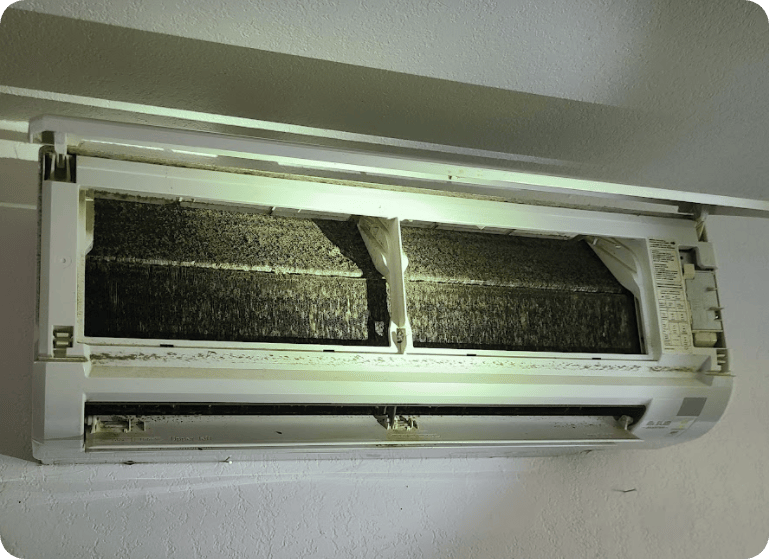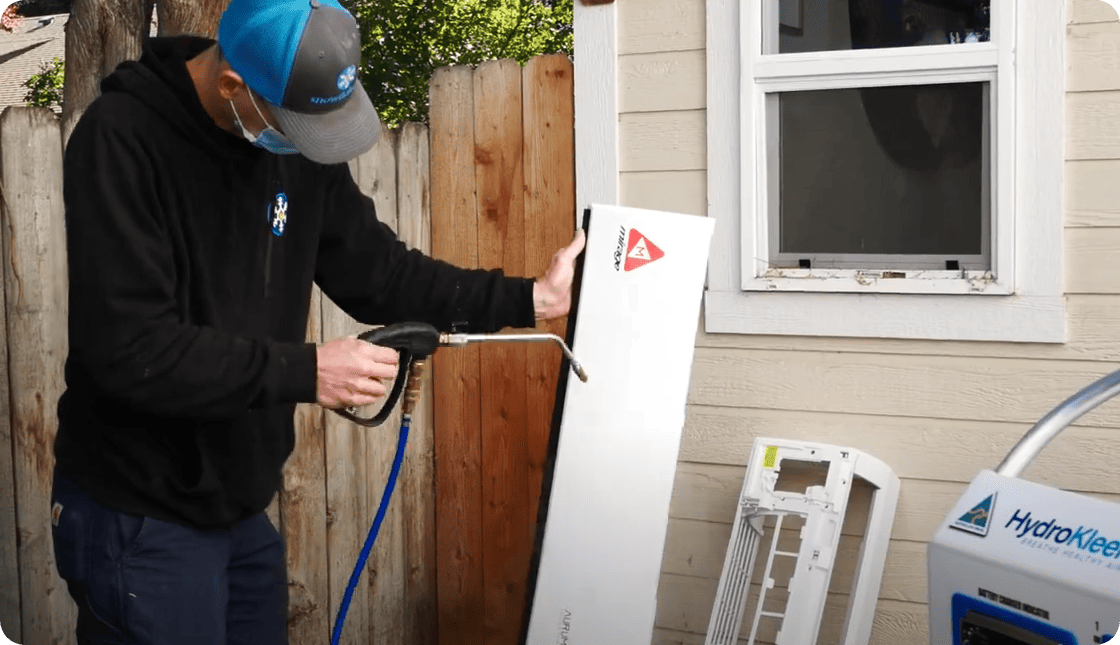Common Symptoms And Early Warning Signs Of Mold Toxicity Or Poisoning
 Mold toxicity is challenging to identify and diagnose. You wouldn’t immediately equate the common symptoms with mold exposure. The differences between one-time exposure or an allergy are tough to distinguish. And, there are some myths about mold that confuse the issue.
Mold toxicity is challenging to identify and diagnose. You wouldn’t immediately equate the common symptoms with mold exposure. The differences between one-time exposure or an allergy are tough to distinguish. And, there are some myths about mold that confuse the issue.
In this article, we’re examining the difference between mold allergies and mold toxicity. Then, we’ll dig deeper into the causes and symptoms of mold toxicity. We’ll also cover how to address and prevent problems due to mold exposure.
And, that process starts at home. Even the most minor toxic mold infestations get more invasive and harmful over time. Mild health problems also worsen with constant exposure.
And unfortunately, your heating and cooling system is an ideal breeding ground for mold and other toxins. Mini splits, in particular, are vulnerable to massive infestations. That’s why we’re involved.
Related: How Mold In Ductless Mini Splits Causes Biotoxin Illness
Our parent company, HydroKleen Global, recognized the problem with mold buildup in mini splits more than a decade ago. They also realized how it affected people’s indoor air quality and overall health.
Since then, the founders have continuously developed and improved the equipment, cleaning solutions, and processes they’ve used to eradicate microbial contaminants in more than 1.5 million mini splits in 36 countries.
Now, as ductless systems become more popular here in the U.S., HydroKleen208 offers this service to Boise Metro and Valley County homes and businesses.
But, we’ll talk more about that later. For now, let’s focus on identifying mold toxicity symptoms and what to do if you suspect a problem in your home.
Mold Allergy Vs. Mold Toxicity
A mold allergy results from an immune system overreacting to mold spores. Symptoms include a runny nose, watery eyes, and restricted breathing, and it’s a common asthma trigger. Mold toxicity is when exposure to toxic vapors causes chronic physical and mental health problems.
Related: Excellent Indoor Air Quality At Home Is Crucial For People With Asthma
The two are related but different. Allergy symptoms go away on their own once you’re no longer around mold spores. They don’t necessarily lead to toxicity syndrome.
By contrast, mold toxicity also affects people who aren’t allergic. And, the symptoms stay with you even when you’re not around those contaminants anymore.
Is Black Mold Always Bad?
Black mold being poisonous is a common myth that’s not entirely accurate. People with mold allergies will experience reactions to a variety of mold strains. And, ingesting or breathing in any mold in large quantities and over a long time can cause problems. Worrying about only black mold means overlooking other issues.
As a result, you should address any type of mold buildup in your home. That’s especially so if you’re experiencing allergy symptoms, notice indoor air quality problems, or generally feel sick in your house.
How Do You Know If Mold Is Making You Sick?
 Some mold toxicity symptoms resemble seasonal allergies. People also report chronic fatigue, headaches, light sensitivity, abdominal pain, diarrhea, blurred vision, and joint pain or morning stiffness, among other problems. Long-term and psychological effects include mood swings, memory, word recollection, concentration issues, tremors, and vertigo.
Some mold toxicity symptoms resemble seasonal allergies. People also report chronic fatigue, headaches, light sensitivity, abdominal pain, diarrhea, blurred vision, and joint pain or morning stiffness, among other problems. Long-term and psychological effects include mood swings, memory, word recollection, concentration issues, tremors, and vertigo.
With such a wide variety of symptoms, mold toxicity can often go undiagnosed. In fact, it’s a somewhat controversial diagnosis.
Since we’re not medical experts, we’re not wading too deep into those waters. But, the fact remains that mold exposure can trigger allergic reactions and other issues. And, exposure often happens in the home.
<h3>Mold And “Sick Building Syndrome”</h3>
Mold contributes to “Sick Building Syndrome,” which covers a variety of physical symptoms due to poor indoor air quality. It’s recognized by OSHA and the EPA and among other health organizations. And while the term usually refers to commercial buildings and businesses, it also applies to homes and dwellings.
Related: Mold Toxicity And Physical Symptoms
Where Does Mold Grow In Your Home?
Mold grows in dark, moist, and warm places. At home, that’s a cellar or behind appliances. Plumbing leaks can result in buildup behind walls and under flooring. HVAC systems, particularly mini splits, are prone to mold infestations as they generate or remove heat and address humidity.
The problem with mini splits is that mold spores and other microbial contaminants enter as the air handlers draw them in. It’s dark inside there, and heat from the electrical and mechanical components keeps it warm.
Meanwhile, the heat transfer process affects water vapor in the air, leading to moisture inside the system. In particular, the condenser coil, where condensation occurs, gets clogged due to mold buildup.
At the same time, even the best HVAC technicians can’t really get inside to clean them. They’d have to take it apart and clean each piece and every crevice individually. It’s labor-intensive and expensive, so most contractors just include a basic surface clean with a tune-up.
Signs Of Mold In Your Ductless Mini Split
A ductless mini split in service for a year or longer likely has mold on the coil and behind the barrel fans. Common signs include:
- Poor Indoor Air Quality
- Year-Round Seasonal Allergy Symptoms
- Hot And Cold Spots In Your Home
- Electric Bill Keeps Going Up
Essentially, you’re looking for indoor air quality problems at the same time you’re noticing poor performance from your ductless system. That combination of issues indicates that the buildup inside your system is causing it to malfunction.
At the same time, it’s also spreading mold spores and other toxins as it recirculates the air running through it.
How To Clean Mold Out Of A Mini Split
 The best, and really only, way to clean mold out of a mini split is with a deep cleaning. A professional needs the right equipment and cleaners to flush out all organic and nonorganic buildup in the air handlers and heat pump.
The best, and really only, way to clean mold out of a mini split is with a deep cleaning. A professional needs the right equipment and cleaners to flush out all organic and nonorganic buildup in the air handlers and heat pump.
Yes, a tune-up or professional maintenance is essential to keep your system running smoothly. But, as we mentioned, it doesn’t include a comprehensive cleaning.
HydroKleen208 specializes in deep cleanings that eradicate all buildup inside your system. We do it using non-toxic and environmentally-safe cleaning solutions.
And, we use custom-built pressure washers that reach in and around all the components. We calibrate them carefully to use just enough force without damaging anything.
Related: What To Expect With Your HydroKleen Appointment
More Benefits Of Mini Split Deep Cleaning
A mini split deep cleaning doesn’t just get rid of mold and improve your indoor air quality. It also improves performance, which means better year-round comfort. And, it increases efficiency: Your system will use less electricity to do the job, which means lower utility bills.
Related: How Often Should A Mini Split Be Cleaned?
Mini Split Cleaning in Cascade, ID
HydroKleen208 is the world-recognized leader for mini split cleaning in Cascade, ID and anywhere in Valley County or Boise Metro. Our process is guaranteed to eliminate mold spores, bacteria, and more from your home’s ductless heating and cooling system. To learn more or schedule your cleaning, click below or call (208) 779-5596.
